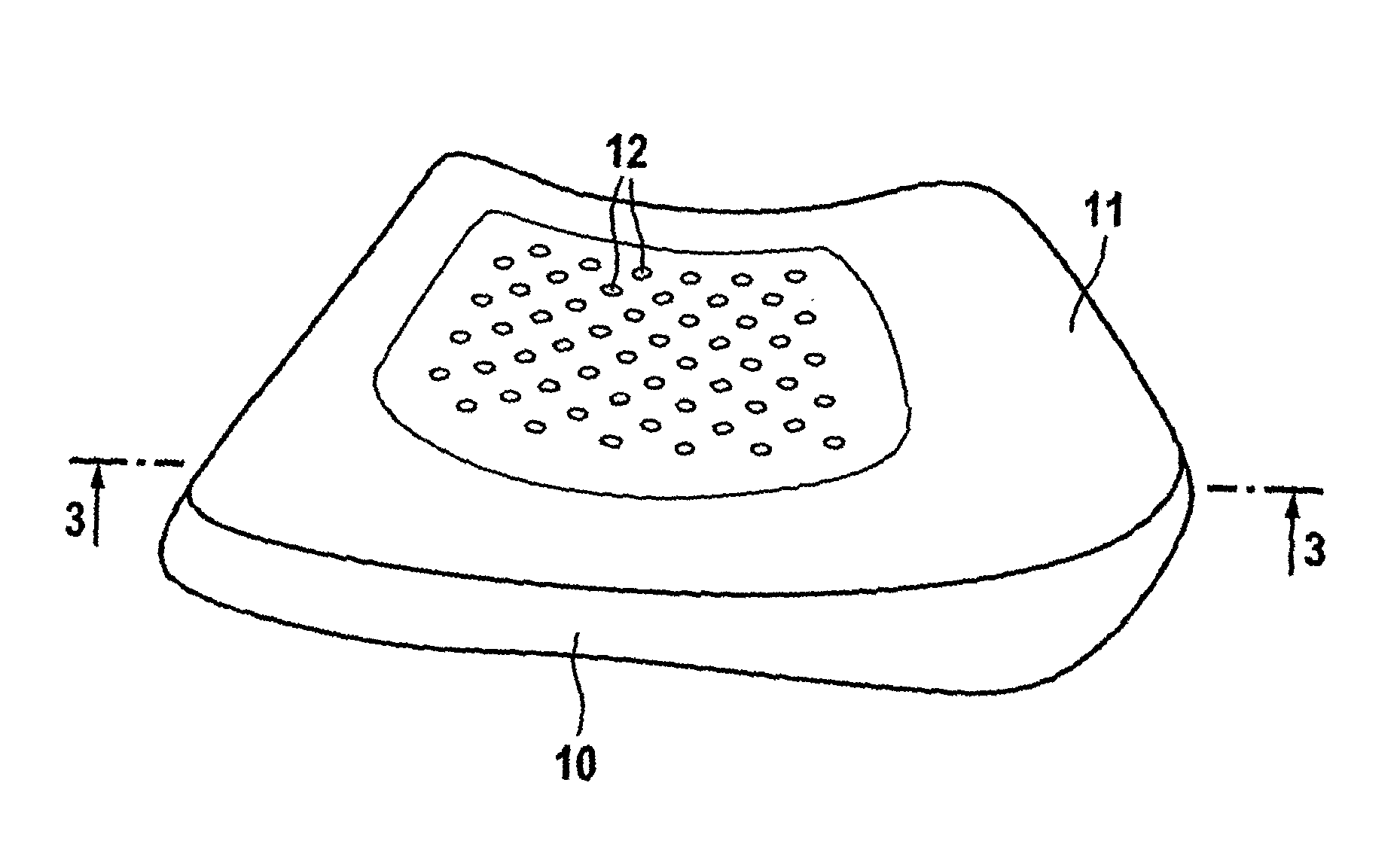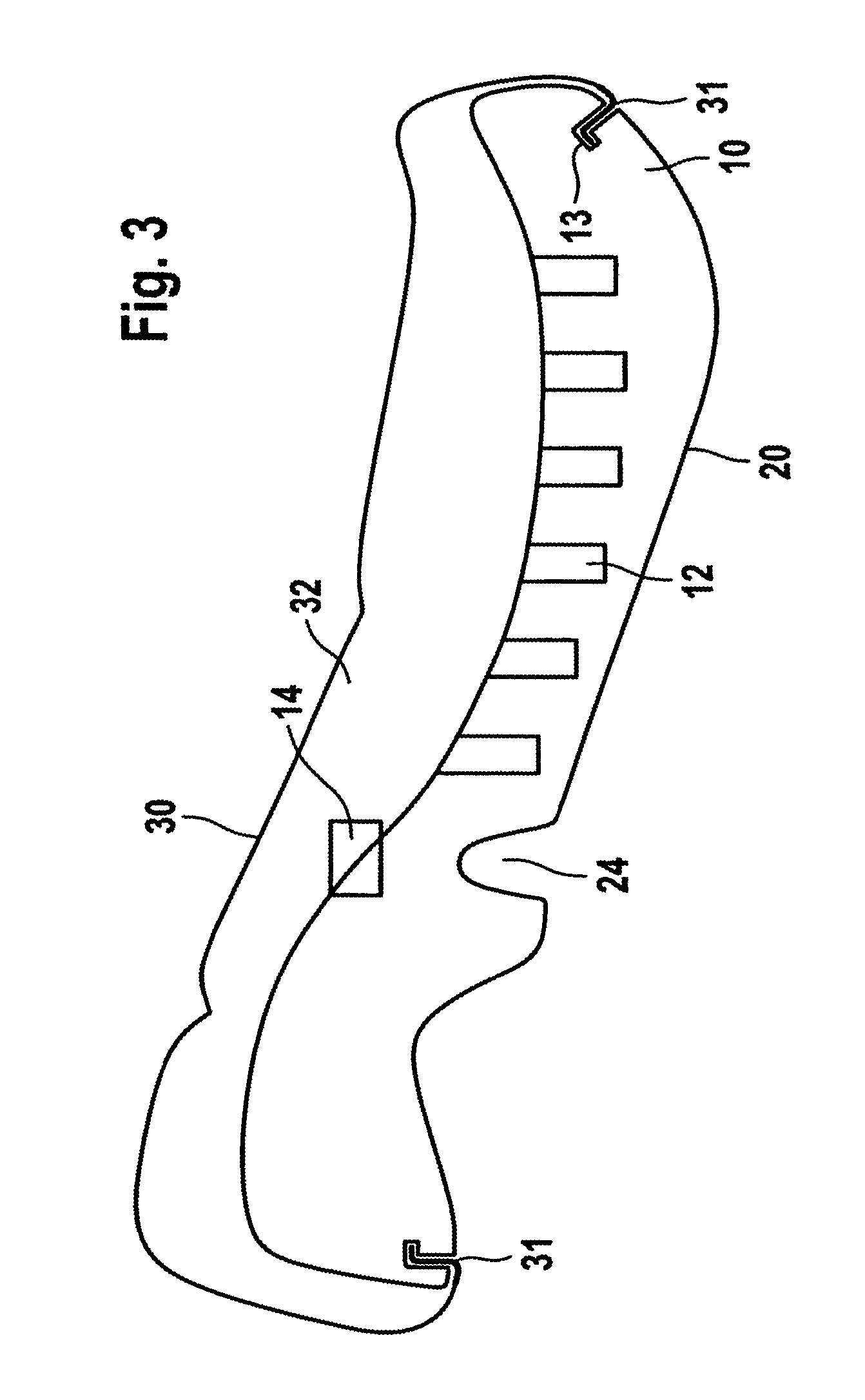Automobile Vehicle Passenger Seat and Process For Producing A Vehicle Passenger Seat
a technology for passenger seats and vehicles, applied in the field of upholstery, can solve the problems of seat belt strangling the passenger with fatal consequences, comfort not providing the necessary structural strength of seats at the same time, and adds to the cost of manufacturing seats, so as to enhance structural stability, reduce stiffness, and enhance comfort
- Summary
- Abstract
- Description
- Claims
- Application Information
AI Technical Summary
Benefits of technology
Problems solved by technology
Method used
Image
Examples
Embodiment Construction
[0045]FIG. 1 illustrates a seat body 10 of a passenger seat in accordance with the present invention. As shown in FIG. 1, the seat body 10 is molded of one single material, namely of EPP. The upper surface 11 is provided with a plurality of holes 12 to further enhance comfort and to provide weight reduction. The upper surface 11 is contoured to match an offset of a dummy bottom form.
[0046]FIG. 2 shows a part of a rear side 20 of a further embodiment of a passenger seat in accordance with the present invention. The seat body 10 is made from a EPP-foam, most preferably with a density between 30 to 40 g / l. The seat body 10 may be fabricated utilizing a conventional EEP mold which has been suitably adapted to include means to retain in place vehicle anchorage means 21 in one of the molds. Specifically, an anchor portion 23 of the vehicle anchorage means 21 is connected by suitable attachment means 22 to the seat body 10. The rear side 20 comprises several recesses 24 to further enhance ...
PUM
| Property | Measurement | Unit |
|---|---|---|
| Density | aaaaa | aaaaa |
| Density | aaaaa | aaaaa |
| Weight | aaaaa | aaaaa |
Abstract
Description
Claims
Application Information
 Login to View More
Login to View More - Generate Ideas
- Intellectual Property
- Life Sciences
- Materials
- Tech Scout
- Unparalleled Data Quality
- Higher Quality Content
- 60% Fewer Hallucinations
Browse by: Latest US Patents, China's latest patents, Technical Efficacy Thesaurus, Application Domain, Technology Topic, Popular Technical Reports.
© 2025 PatSnap. All rights reserved.Legal|Privacy policy|Modern Slavery Act Transparency Statement|Sitemap|About US| Contact US: help@patsnap.com



